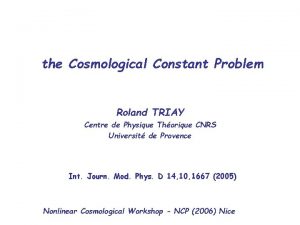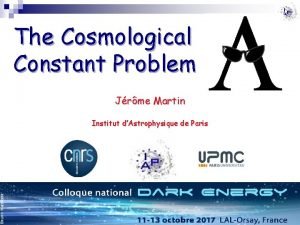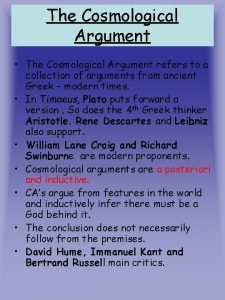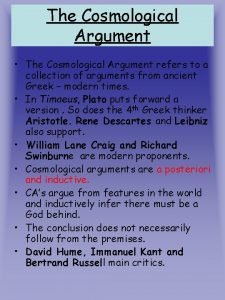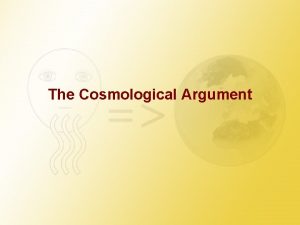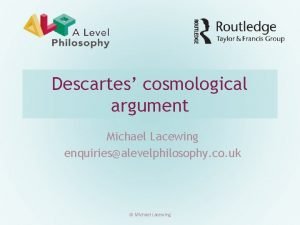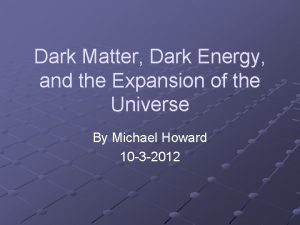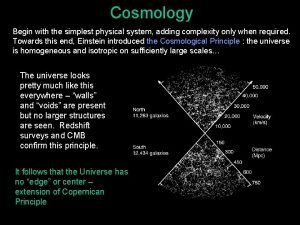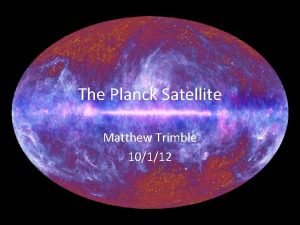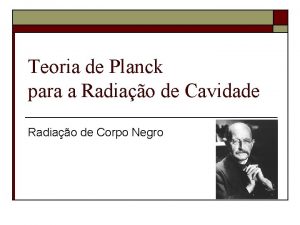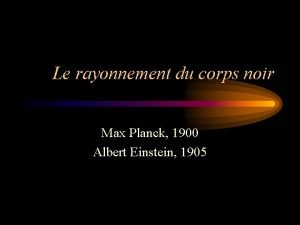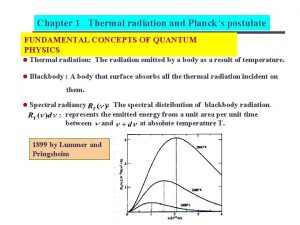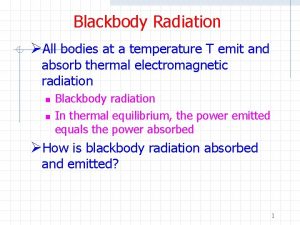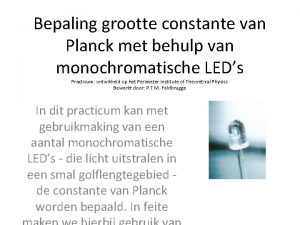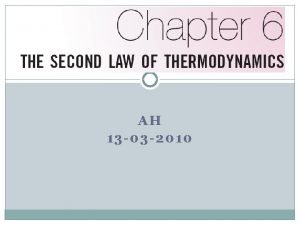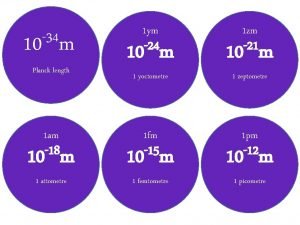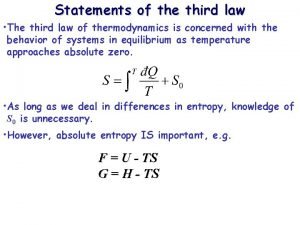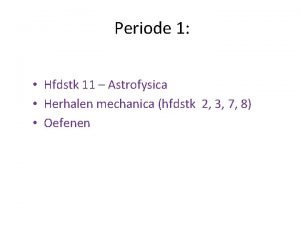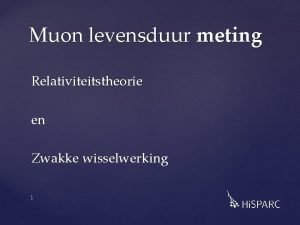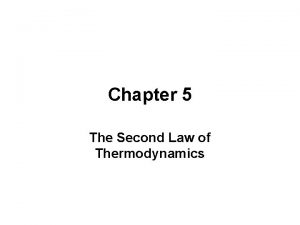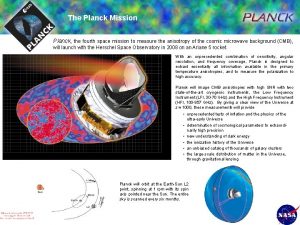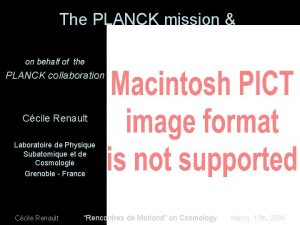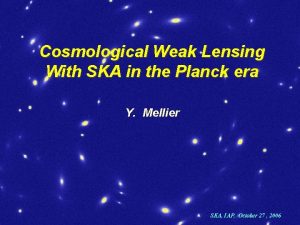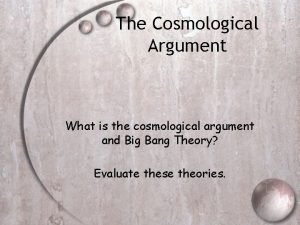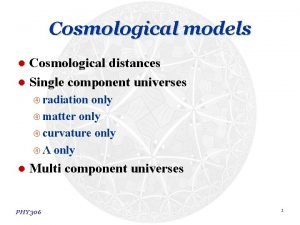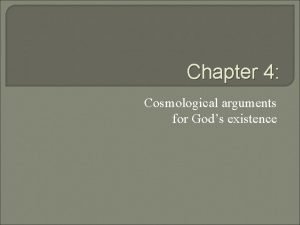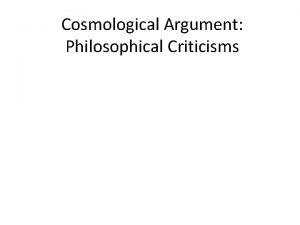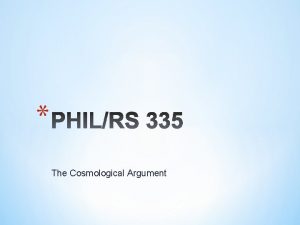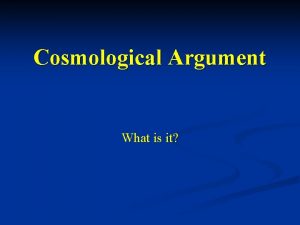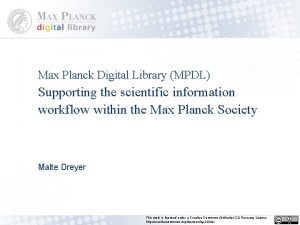The scientific program Cosmological goals of Planck vs






































- Slides: 38

The scientific program Cosmological goals of Planck vs measured performances Jean-Loup Puget on the behalf of the Planck collaboration J. L. Puget Institut d'Astrophysique Spatiale Orsay on the behalf of the Planck Collaboration Princeton 21 Feb 2011 J. L. Puget

Outline 1. The early Planck papers (ar. Xiv jan 2011): 1. Overview of in flight Planck performances and data processing 2. Early Release Compact Source Catalogue 3. Foreground science 2. Future foreground science 3. Cosmological goals vs measured performances Princeton 21 Feb 2011 J. L. Puget

Planck is a project of the European Space Agency -- ESA -- with instruments provided by two scientific Consortia funded by ESA member states (in particular the lead countries: France and Italy) with contributions from NASA (USA), and telescope reflectors provided in a collaboration between ESA and a scientific Consortium led and funded by Denmark. The Planck Collaboration is composed of - a core: the Pl. Sc. Off. , the two instruments Core Teams and the telescope team. They are in charge of producing the scientific products distributed to the scientific community and the first set of papers on CMB cosmology. - it also includes associates from more than 50 scientific institutes in Europe, the USA and Canada who are contributing to the scientific program outside CMB cosmology. Princeton 21 Feb 2011 J. L. Puget

Planck: the 3 rd generation space CMB experiment • Planck has the ambition to gain a factor 2. 5 in angular resolution and 10 in instantaneous map sensitivity with respect to WMAP • Planck will be nearly photon noise limited in the CMB channels (100 -200 GHz) • Temperature power spectrum sensitivity should be limited by the ability to remove foregrounds (thus a very broad frequency coverage: 30 GHz-1 THz) • HFI detectors are cooled to 100 m. K, 6 bands 100 to 857 GHz, read in total power mode with a white noise from 10 m. Hz to 100 Hz (no 1/f noise from readout electronics in the signal range) • the temperature stability of the 100 m. K stage must be better that 20 n. K/rt-Hz in the same band not to affect the sensitivity • LFI uses coherent detection and HEMTS based amplifiers in 3 bands 30 to 70 GHz, photometric reference loads on the 4 K box of the HFI FPU with micro K stability. Princeton 21 Feb 2011 J. L. Puget

Noise spectrum of the 10 MW resistor in the focal plane 10 µK/Hz 1/2 10 -4 Hz 10 -4 Hz Princeton 21 Feb 2011 10 Hz J. L. Puget 100 Hz

cryogenic chain: the cool down 93 m. K July 3 rd 2009 Princeton 21 Feb 2011 J. L. Puget

Princeton 21 Feb 2011 J. L. Puget

Princeton 21 Feb 2011 J. L. Puget

Princeton 21 Feb 2011 J. L. Puget

the 100 m. K bolometer plate PID power fluctuations follows closely the opposite of the SREM particle counts fluctuations • total power from CR on bolometer plate is 12 n. W PID bolometer plate average is 5 n. W dilution PID is 25 n. W it is affected by the CR flux and by the small variations of the Helium isotopes flow small solar flare 10 -7 Hz Princeton 21 Feb 2011 J. L. Puget 10 -4 Hz

• activité solaire 1976 Princeton 21 Feb 1800 2011 1700 2010 1900 J. L. 2000 Puget

Standard Radiation Monitor Removing the low energy CR variations using SREM data and dilution variations (long term drift and effect of service module temperature variations) Princeton 21 Feb 2011 J. L. Puget

Princeton 21 Feb 2011 J. L. Puget

following the time ordered data (TOI) processing Princeton 21 Feb 2011 J. L. Puget

Princeton 21 Feb 2011 J. L. Puget

Princeton 21 Feb 2011 J. L. Puget

Princeton 21 Feb 2011 J. L. Puget

The Planck scientific program: foregrounds • sources – rising spectra radio sources – infrared galaxies (SED of galaxies, high z sources, star formation history) – SZ sources • interstellar medium – tracing dust foreground (new dust opacity all sky map, rotation of PAHs and VSG) – full sensus of cold spots in the ISM – dust properties in the mm submm spectral range including polarization – structure of the galactic magnetic field (particularly the statistical properties of the turbulent field) – Princeton 21 Feb 2011 J. L. Puget

Sources • ERCSC • cold ISM concentrations • SZ sources: – 5 arc min is too a low resolutionto be competitive with some ground based experiments (SPT, ACT, interferometers) – all sky is very good for rare sources (very massive clusters, high z), stacking of sources from other catalogues – power spectrum of unresolved sources background at intermediate l from Planck will complement SPT, ACT • Infrared galaxies – CIB – high z rare objects (proto clusters) Princeton 21 Feb 2011 J. L. Puget

Contents of ERCSC Catalogs from Intensity Maps • ERCSC_f 030. fits • ERCSC_f 044. fits • ERCSC_f 070. fits • ERCSC_f 100. fits • ERCSC_f 143. fits • ERCSC_f 217. fits • ERCSC_f 353. fits • ERCSC_f 545. fits • ERCSC_f 857. fits with bandfilled info at 217, 353 and 545 GHz All sky |b|>30 705 307 452 143 599 157 1381 332 1764 420 5470 691 6984 1123 • • *fluxmap. pdf: Sky distribution with flux information ERCSC cutouts and PSF cutouts: 4*FWHM CMB subtracted maps. 7223 2535 8988 4513 • • • ECC. fits (915 entries; 35 at |b|>30) Planck_ECC. pdf: ECC cutouts on 353, 545 and 857 residual maps; 0. 33 deg on a side ECC_skymap. pdf: Sky distribution of ECC candidates • • ESZ. fits (189 sources; 134 at |b|>30) ESZ_skymap. pdf: Sky distribution of ESZ candidates • Explanatory Supplement 20/24 R. Chary: Paris, Jan 2011

Features of Planck • Unique phase space – the first simultaneous radio through submillimeter all sky survey - Fills in the gap in phase space between WMAP and Akari/IRAS - Probes both the dusty infrared luminous sources and the synchrotron sources • Spatial resolution well matched to IRAS at 3 longer wavelengths • Improved spatial resolution and to WMAP in the radio R. sensitivity Chary: Paris, compared Jan 2011 21/24

ERCSC Sensitivity Planck Galactic Plane |b|<10 deg Planck Extragalactic |b|>30 deg References C. Beichman et al. 1988 B. Gold et al. 2010 P. Gregory et al. 1996 T. Murphy et al. 2010 E. Wright et al. 2009 22/24 R. Chary: Paris, Jan 2011

Princeton 21 Feb 2011 J. L. Puget

catalogue of 189 clusters detected in SZ IAP 10 Décmbre 2010 J. L. Puget

3 amas de galaxies en fusion IAP 10 Décmbre 2010 J. L. Puget

electromagnetic content of the universe today CMB CIB COpt B X-ray B Gamma B Radio B CNES 17 Fevrier 2011 J. L. Puget H. Dole

Power spectrum of the Cosmic Infrared Background CMB is the main contaminant CMB/CIB=1000 at l=200 • the CIB power spectrum illustrates the power of the Planck data for component separation and CMB work • at 217 GHz the measured CIB power spectrum l Cl is 0. 25 µK 2 with a S/N of 5 on 100 sq deg CNES 17 Fevrier 2011 J. L. Puget G. Lagache

interstellar medium • cold gas and B field substructure of interstellar filaments • turbulent magnetic field • rotation of PAHs and very small grains IAP 10 Décmbre 2010 J. L. Puget

spinning dust in Perseus and rho Oph • SED are different Princeton 21 Feb 2011 J. L. Puget

Planck scientific program: CMB • refining cosmological parameters by a factor 10 to 30 to test for tensions in the cosmological parameters issued from WMAP and other cosmological probes (reionization history) • neutrino mass (upper limits can be lowered by a factor of 4 to 5) • search for B modes from inflation gravity waves; test compatibility with ns predicted by simple inflation models • non gaussianity: – test of inflation models, – of non inflationary models (non trivial topology on large scales) – lensing Princeton 21 Feb 2011 J. L. Puget

improvements on cosmological parameters over WMAP (blue book) Princeton 21 Feb 2011 J. L. Puget

Planck in combination with other data sets Princeton 21 Feb 2011 J. L. Puget

Indirect observation of primordial gravity waves • They imprint polarization on the CMB from Compton interaction with ionized gaz affected by the gravity waves • r = 0. 1 leads to rms of Bmodes 0. 06 m. K • This happens – at the time of recombination – at « low redshifts » after reionization Princeton 21 Feb 2011 J. L. Puget

Polarization from lensing Princeton 21 Feb 2011 J. L. Puget

Princeton 21 Feb 2011 J. L. Puget

Primordial B-mode detection • Efstathiou, Gratton 2009 • using Planck Sky Model (full sky simulation but rather simple model of foregrounds) • nominal sensitivity and extended mission (4 sky surveys vs 2) • takes simple inflation model predictions – r = 0, 0. 05, 0. 1 (energy scale 1. 4 1016 Ge. V for r = 0. 05 with ns=0. 96) – can we detect the predicted B modes? • after a simple component separation assuming no systematic effects Princeton 21 Feb 2011 J. L. Puget

• Planck can detect tensor to scalor ratio down to 0. 05 (present best direct upper limit is 0. 3 one sigma, Bicep Chiang et al 2009) Princeton 21 Feb 2011 J. L. Puget

Princeton 21 Feb 2011 J. L. Puget J. Tauber: Bogotá, 6 Aug. 2009
 Strategic goals tactical goals operational goals
Strategic goals tactical goals operational goals Strategic goals tactical goals operational goals
Strategic goals tactical goals operational goals Roland triay
Roland triay Cosmological constant
Cosmological constant Descartes cosmological argument
Descartes cosmological argument St thomas aquinas cosmological argument
St thomas aquinas cosmological argument St thomas aquinas cosmological argument
St thomas aquinas cosmological argument Descartes cosmological argument
Descartes cosmological argument Einstein cosmological constant
Einstein cosmological constant The universe expanding than
The universe expanding than Ontological cosmological teleological
Ontological cosmological teleological Kant's criticism of cosmological argument
Kant's criticism of cosmological argument Cosmological argument poster
Cosmological argument poster Argument from contingency
Argument from contingency General goals and specific goals
General goals and specific goals Motivation in consumer behaviour
Motivation in consumer behaviour Goal of scientific method
Goal of scientific method Goals of psychological enterprise
Goals of psychological enterprise Scientific inquiry vs scientific method
Scientific inquiry vs scientific method How is a scientific law different from a scientific theory?
How is a scientific law different from a scientific theory? Matthews planck
Matthews planck Era de planck
Era de planck Planck's radiation law
Planck's radiation law 1900 max planck
1900 max planck Satuan entropi
Satuan entropi Tunnel blast freezer
Tunnel blast freezer Frequency units
Frequency units Modelo atomico de max planck
Modelo atomico de max planck Plancks postulate
Plancks postulate Carnot ısı makinesi
Carnot ısı makinesi Planck's radiation law
Planck's radiation law Constante van planck
Constante van planck Kelvin planck statement
Kelvin planck statement Planck length
Planck length Planck statement of the third law
Planck statement of the third law Planck kromme
Planck kromme Planck kromme
Planck kromme Kelvin planck statement
Kelvin planck statement Clausius inequality in thermodynamics
Clausius inequality in thermodynamics


